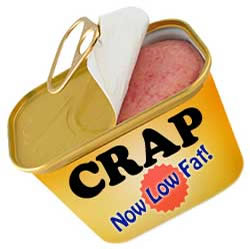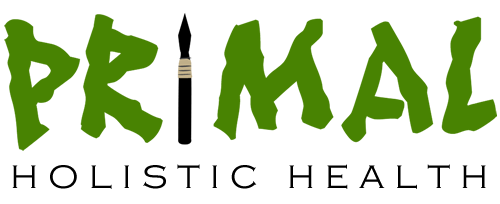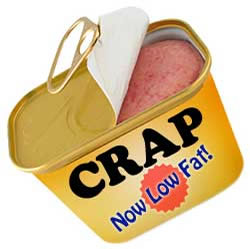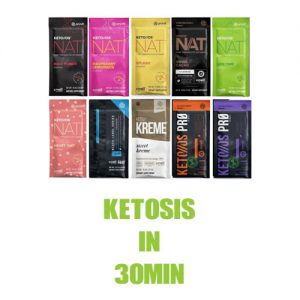For more than 30 years, the low-fat diet has become the norm in terms of healthy eating. Nutritious farm-fresh staples like butter, eggs, milk and meat turned into margarine, egg whites, skim milk and lean cuts. The words fat, fatty, and high-fat are immediately associated with poor eating habits, weight gain, obesity and disease. However, is this association fully correct? And are the supposedly healthy alternatives better or worse?

After thirty years of low-fat, we are fatter and sicker than ever.
The food product companies, however, are laughing all the way to the bank, as we continue to hand over our cash for more than 20,000 low-fat and non fat products. Let’s have a look at what these lean and skim products and foods are actually offering, and why they are not a viable health solution.
The most common reduced-fat product in any household is milk. Unpasteurised and unprocessed, milk, cheese, and yoghurt are some of nature’s health foods. Unfortunately, cows don’t produce skim milk, so the factories put our wholesome milk through degrading and toxifying processes to cash in on our irrational attempts to be thin. Low-fat milk is only 2% fat, skim milk is 1% fat, and non-fat milk, if you can handle the watery liquid, is 0% fat. Sounds like a great reduction in fat if you didn’t know that whole milk is naturally only 3.25% fat! If you do the math, you will realise that full fat milk, cheese and yoghurt is already more than 96% fat free. Milk is already put through enough trauma with pasteurisation, and then we have ruined it further to eliminate only 1-3% more fat. Butter, one of our most important sources of fat-soluble nutrients, is at the extreme end of this degradation having been replaced with artificial and disease-causing margarine, all in the name of low-fat diets.
Next we have eggs, often referred to as “the perfect food” as they are rich in almost every nutrient, contain certain fatty acids which play vital roles in brain function, and are considered to be the most complete protein source in a single food. The yolk portion, dreaded by low-fat diet followers, is actually the most concentrated source known of choline, a B vitamin found in lecithin necessary for keeping cholesterol moving in the blood stream. If eggs are such a perfect food, taking out any components – as dieters do with the egg yolks – is guaranteed to alter its perfection.
Actually, if we look at how nature has provided animal protein foods – meat, eggs and milk – we will notice that they always come with fat. This is because our bodies need the fat soluble vitamins of A and D, contained in the animal fat, to assimilate the protein. Additionally, without vitamins A and D we are not able to utilise the minerals in our food. This explains why we should eat the fatty meat cuts of beef, lamb, pork, chicken and other properly raised animals. Primal man surely didn’t kill a bird and then just eat the breast, and neither should we.
But isn’t saturated fat bad for you?
The reality of this myth is that not all fats are created equal. All of nature’s fats that were accessible to primal man are the fats that assist in our body’s functions and immune support. However, the fats that were created in the labs of our modern world, known as hydrogenated or trans fats, are the fats that are highly detrimental to our health and waistlines. These man-made fats are found in the majority of processed foods, especially in those marketed as low-fat and fat-free. So in trying to avoid fat, we have been eating less of nature’s beneficial fats, yet a huge amount of damaging hydrogenated or trans-fats, hence we are sicker and fatter than ever.
Why would well-educated and respected doctors and nutritionists be telling us to follow a low-fat diet? To put it simply, a theory (that saturated fat was harmful) became truth, and that truth has now become gospel. As in many cases of consumer trends, this acceleration to gospel may have been financially motivated. This is not hard to imagine when you think how the low-fat craze has moved our focus from nature’s foods to commercially produced foods. Even candy makers cash in on this marketing madness by putting the term ‘fat-free’ on their bags of artificial, nutritionally void candies. Consumers have become brainwashed to feel good about eating these toxic gummy candies and other fake foods because the package says it won’t make them fat.
When raised properly, an animal’s fatty meat provides man with some of nature’s perfect food. Taking the low-fat and lean route can lead to serious mineral deficiencies, inhibit essential protein intake, increase trans-fat consumption and thus lead to weight gain and disease. It’s time for change. Let’s eat real food.
Resources:
– Nourishing Traditions; Sally Fallon. Washington DC: New Trends Publishing, 1999
– USDA National Agriculture Library http://www.nal.usda.gov








